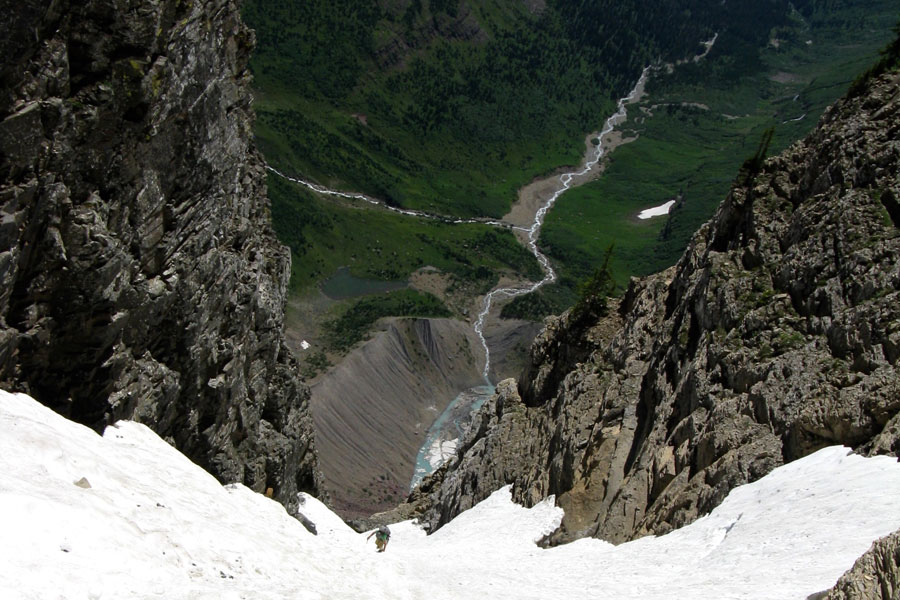An experienced mountaineer from Kalispell was injured June 27 in a massive fall in Glacier National Park that required a complicated helicopter rescue in steep, rugged and remote terrain.
Jack Beard, 60, is hospitalized but in stable condition after falling some 600 feet while attempting to pioneer a new route up a glacial wall called the Lithoid Cusp. Located in the park’s northeast area, the sheer, towering wall spans Mount Merritt and Ipasha Peak and features narrow, exposed ledges and steep pitches of loose rock, which the pair of climbers successfully navigated leading up to the fall.
According to Beard’s climbing partner, David Steele, also of Kalispell, Beard was ascending the final 800 feet of the planned route along a snow chute and equipped with crampons and an ice ax when he lost his footing and was unable to self-arrest. He slid to the bottom of the snow chute and slammed into a scree bench before falling another 200 feet over the rock ledge and down a waterfall.
He landed on a rock outcropping and sustained a concussion, fractures to eight ribs, his spine and his right arm. The fall occurred around 11:30 a.m.
Steele, who only saw the first 30 feet of the fall before Beard disappeared from view, began descending the wall to reach his partner, but assumed the worst. After nearly an hour of down-climbing, he spotted Beard perched on the outcropping and reached his partner a short time later, surprised and relieved that he had survived the fall.
“He was conscious but disoriented, but I had just spent an hour thinking he probably hadn’t survived,” Steele said.
Not far below the outcropping is a 3,000-foot vertical drop to the basin floor.
Steele set to work building a platform out of rocks, laid out an inflatable pad and anchored Beard. He also flagged the area with a yellow tent, unpacked a sleeping bag and arranged provisions and equipment so that Beard would be prepared to spend the night. He attempted to flag down several passing helicopters, albeit unsuccessfully.
At 2 p.m., Steele departed to search for help, climbing back up to the couloir, ascending the snow chute and then descending the other side to Margaret Lake and further to Mokowanis Lake. A thru-hiker on the Pacific Northwest trail offered him a satellite device capable of transmitting an SOS message, which Steele sent around 5:45 p.m.
Due to the steep terrain and the lack of a landing area, park dispatch called on Two Bear Air to perform the rescue. The rescuers were lowered down on a hoist line, retrieved Beard and transported him to Many Glacier. From there, he was taken to Browning by ambulance and was transferred to Great Falls by helicopter.
Steele said he and Beard, who is a member of the Glacier Mountaineering Society, were grateful to park personnel and especially Two Bear Air for performing the difficult rescue.
“It’s amazing that we have those capabilities here, especially when you think about what we would have had to do to get him down otherwise,” Steele said. “It’s crucial that we have people like that to perform these kinds of rescues.”
Jim Bob Pierce, the main pilot for Two Bear Air, described the rescue as “textbook” for the specialized helicopter. Still, he said Beard was incredibly lucky to be alive.
“My goodness, he fell a long way. He’s one of the luckiest guys I’ve seen,” Pierce said. “He landed on the only possible place on the wall that could have stopped him. If he’d gone any further, we wouldn’t have been on a rescue mission.”
